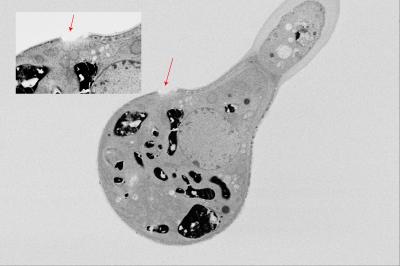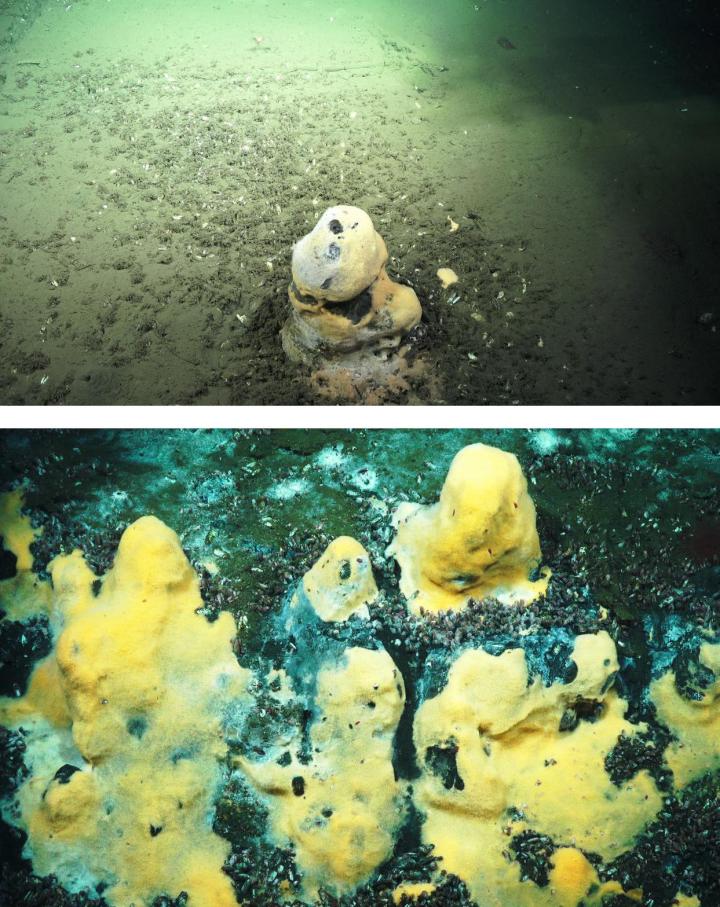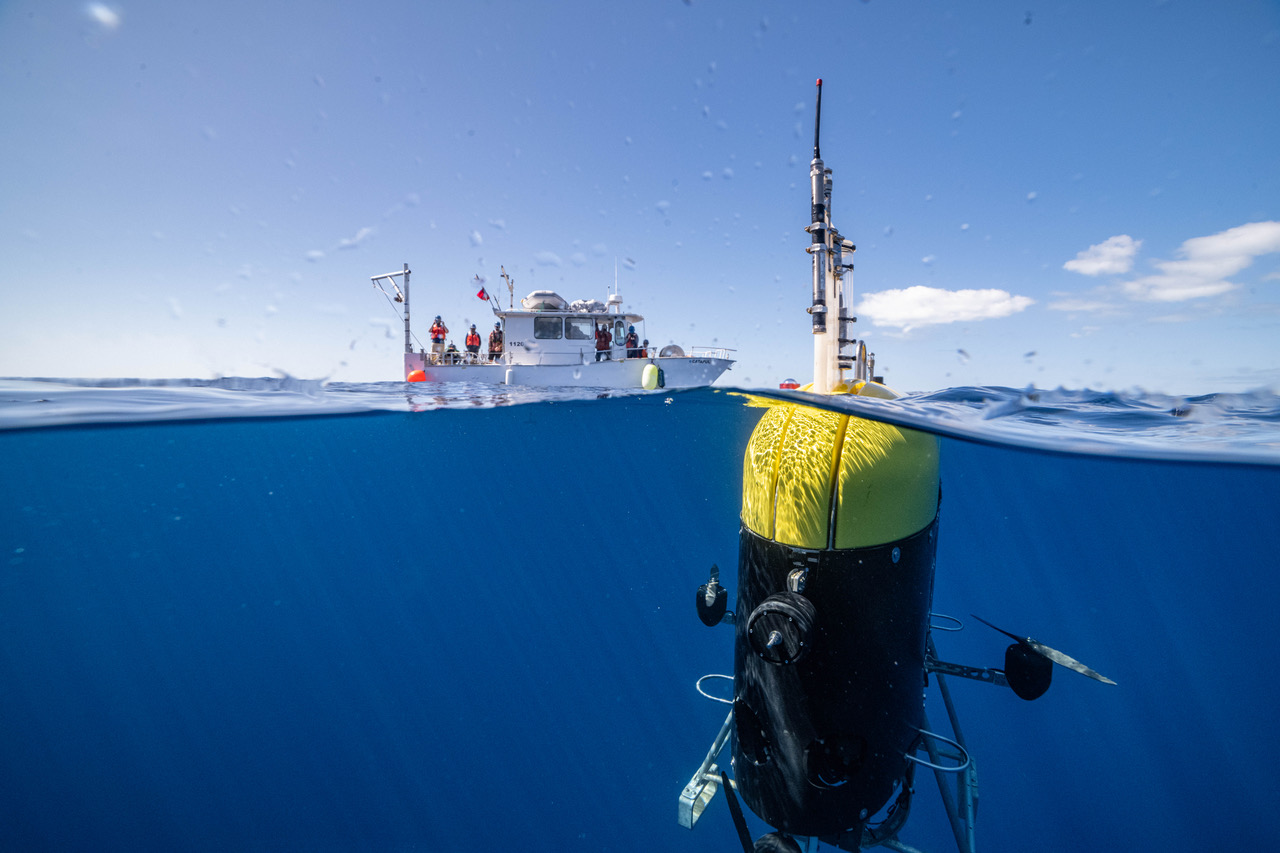In a new study by researchers at Yale Cancer Center, combining the immunotherapy drug durvalumab and PARP-inhibitor olaparib with chemotherapy improved response to treatment for women with high-risk, HER2-negative breast cancer, including a subset of estrogen receptor positive cancers.
Category: Research Results
‘Nanodecoy’ Therapy Binds and Neutralizes SARS-CoV-2 Virus
Nanodecoys made from human lung spheroid cells (LSCs) can bind to and neutralize SARS-CoV-2, promoting viral clearance and reducing lung injury in a macaque model of COVID-19.

Alpine plant spins its own flavonoid wool
Like the movie version of Spider-Man who shoots spider webs from holes in his wrists, a little alpine plant has been found to eject cobweb-like threads from tiny holes in specialised cells on its leaves.
SLAS Announces Open Access Journal Publishing with Elsevier in 2022
The Society for Laboratory Automation and Screening (SLAS) is pleased to announce the transition of SLAS Discovery and SLAS Technology to a Gold Open Access publishing model as of January 1, 2022. SLAS will partner with Elsevier, which will make both journals available through its online platform, ScienceDirect, in turn, making articles instantly and easily accessible to scientific audiences worldwide.
Beneficial Bacteria Can Be Restored to C-Section Babies at Birth
Babies born by cesarean section don’t have the same healthy bacteria as those born vaginally, but a Rutgers-led study for the first time finds that these natural bacteria can be restored.
A new rapid assessment to promote climate-informed conservation and nature-based solutions
A new article, published as a Perspective in the journal Conservation Science and Practice, introduces a rapid assessment framework that can be used as a guide to make conservation and nature-based solutions more robust to future climate.
Engineered NK cells can eliminate glioblastoma stem cells
Preclinical research finds that glioblastoma stem cells can be targeted by NK cells, but they are able to evade immune attack by releasing TFG-β. Deleting the TFG-β receptor in NK cells renders them resistant to this and restores their anti-tumor activity.
Blood cancer patients with COVID-19 fare better with convalescent plasma
A large, retrospective, multicenter study involving Washington University School of Medicine in St. Louis indicates that convalescent plasma from recovered COVID-19 patients can dramatically improve likelihood of survival among blood cancer patients hospitalized with the virus. The therapy involves transfusing plasma — the pale yellow liquid in blood that is rich in antibodies — from people who have recovered from COVID-19 into patients who have leukemia, lymphoma or other blood cancers and are hospitalized with the viral infection.
Thin, stretchable biosensors could make surgery safer
A research team from Los Alamos National Laboratory and Purdue University have developed bio-inks for biosensors that could help localize critical regions in tissues and organs during surgical operations.
Moffitt Researchers Develop Non-invasive Approach to Measure Biomarker Levels, Predict Outcomes in Lung Cancer Patients
In a new article published in the Journal for ImmunoTherapy of Cancer, Moffitt Cancer Center researchers show that PET/CT images can be used to measure levels of the PD-L1 biomarker of non-small cell lung cancer (NSCLC) patients in a non-invasive manner and, in turn, predict a patient’s response to therapy.
Mystery of Galaxy’s Missing Dark Matter Deepens
Hubble astronomers say they confirmed that an oddball
galaxy mysteriously lacks dark matter—the glue that holds stars and gas together in galaxies. This confirmation challenges the standard ideas of how researchers think galaxies work.
University of Miami Miller School Study Shows COVID-19 mRNA Vaccines Do Not Impact Male Fertility
The Pfizer and Moderna mRNA COVID-19 vaccines is safe for male reproduction, according to a new study by University of Miami Miller School of Medicine researchers published in JAMA , the most widely circulated general medical journal in the world.
Higher COVID-19 Mortality Among Black Patients Linked to Unequal Hospital Quality
If Black patients were admitted to the same hospitals that serve a majority of White patients, researchers showed their risk of death would drop by 10 percent
Antibiotic Novobiocin found to kill tumor cells with DNA-repair glitch
An antibiotic developed in the 1950s and largely supplanted by newer drugs, effectively targets and kills cancer cells with a common genetic defect, laboratory research by Dana-Farber Cancer Institute scientists shows. The findings have spurred investigators to open a clinical trial of the drug, novobiocin, for patients whose tumors carry the abnormality.
Immune system protein may defend against deadly intestinal disease in babies
A study led by researchers at Washington University School of Medicine in St. Louis has identified a protein in the immune system that may protect babies from necrotizing enterocolitis, a leading cause of death among premature infants.
Hackensack Meridian CDI Scientists Develop ‘CATCHER’ for Crucial Biomarkers
The EV-CATCHER methodology identifies and captures tiny pieces of genetic material – and shows value in COVID-19 plasma
Health and Socializing: Why People Use Mixed-Reality Sports Tech
New technologies allow users to do things like race their real bikes against other real people in a virtual world, and a new study outlines what motivates people to use these online platforms. The findings offer insights for future iterations of these technologies – and how to market them.
New Report Offers National Blueprint for Strengthening Family Planning Services in Medicaid Managed Care
A new report by researchers at the George Washington University lays out a blueprint for policies that can strengthen family planning for millions of Medicaid beneficiaries enrolled in Medicaid managed care.
Study of Young Chaotic Star System Reveals Planet Formation Secrets
A team of scientists using the Atacama Large Millimeter/submillimeter Array (ALMA) to study the young star Elias 2-27 have confirmed that gravitational instabilities play a key role in planet formation, and have for the first time directly measured the mass of protoplanetary disks using gas velocity data, potentially unlocking one of the mysteries of planet formation.
Disadvantaged Neighborhoods See More COVID-19 Infections and Deaths, Mount Sinai Scientists Report
New York City neighborhoods that had higher levels of socioeconomic disadvantage experienced more COVID-19 infections and deaths, according to Mount Sinai scientists who created a neighborhood-level COVID-19 inequity index.
1 in 6 families in new study spent more than $5,000 to have a baby
When delivering moms require caesarians or their newborns need neonatal care, some families may spend as much as $10,000 out-of-pocket, according to a new Michigan Medicine-led study.
An Ally for Alloys
Machine learning techniques are accelerating the development of stronger alloys for power plants, which will yield efficiency, cost, and decarbonization benefits.
Pandemic-era crowdfunding more common, successful in affluent communities
A new University of Washington study of requests and donations to the popular crowdfunding site GoFundMe, along with Census data, shows stark inequities in where the money went and how much was donated.

Microbes in ocean play important role in moderating Earth’s temperature
Methane is a strong greenhouse gas that plays a key role in Earth’s climate. Anytime we use natural gas, whether we light up our kitchen stove or barbeque, we are using methane.
At underwater site, research team finds 9,000-year-old stone artifacts
An underwater archaeologist from The University of Texas at Arlington is part of a research team studying 9,000-year-old stone tool artifacts discovered in Lake Huron that originated from an obsidian quarry more than 2,000 miles away in central Oregon.
Is artificial intelligence the key to preventing relapse of severe mental illness?
Is artificial intelligence the key to preventing relapse of severe mental illness?
Scientists Unravel the Function of a Sight-Saving Growth Factor
Researchers at the National Eye Institute (NEI) have determined how certain short protein fragments, called peptides, can protect neuronal cells found in the light-sensing retina layer at the back of the eye. The peptides might someday be used to treat degenerative retinal diseases, such as age-related macular degeneration (AMD).
Researchers Identify New Gene that May Increase Risk of ALS
Researchers have identified a new gene that may increase a person’s risk of developing ALS, according to a new study published in the June 16, 2021, online issue of Neurology®, the medical journal of the American Academy of Neurology. The gene, called TP73, produces a protein to help regulate the life cycle of a cell. Researchers found that some people with ALS have mutations in this gene and that the mutations may interfere with nerve cell health.

Computers predict people’s tastes in art
Do you like the thick brush strokes and soft color palettes of an impressionist painting such as those by Claude Monet? Or do you prefer the bold colors and abstract shapes of a Rothko?

Underwater robot offers new insight into mid-ocean “twilight zone”
An innovative underwater robot known as Mesobot is providing researchers with deeper insight into the vast mid-ocean region known as the “twilight zone.” Capable of tracking and recording high-resolution images of slow-moving and fragile zooplankton, gelatinous animals, and particles, Mesobot greatly expands scientists’ ability to observe creatures in their mesopelagic habitat with minimal disturbance. This advance in engineering will enable greater understanding of the role these creatures play in transporting carbon dioxide from the atmosphere to the deep sea, as well as how commercial exploitation of twilight zone fisheries might affect the marine ecosystem.

Space scientists solve a decades-long gamma-ray burst puzzle
An international team of scientists, led by astrophysicists from the University of Bath in the UK, has measured the magnetic field in a far-off Gamma-Ray Burst, confirming for the first time a decades-long theoretical prediction – that the magnetic field in these blast waves becomes scrambled after the ejected material crashes into, and shocks, the surrounding medium.
New beetle species discovered and named after iconic sci-fi heroines
The original Star Trek television series took place in a future when space is the final frontier, but humanity hasn’t reached that point quite yet. As researchers like Michigan State University entomologists Sarah Smith and Anthony Cognato are reminding us, there’s still plenty to discover right here on Earth.
Working in Central and South America, the duo discovered more than three dozen species of ambrosia beetles — beetles that eat ambrosia fungus — previously unknown to science. Smith and Cognato described these new species on June 16 in the journal ZooKeys.
Computers help researchers find materials to turn solar power into hydrogen
A Penn State-led team of researchers report they have taken a step toward overcoming the challenge of inexpensive hydrogen production by using supercomputers to find materials that could help accelerate hydrogen separation when water is exposed to light, a process called photocatalysis.

Fossil research shows woodlice cousins roamed Ireland 360 million years ago
The old cousins of the common woodlice were crawling on Irish land as long as 360 million years ago, according to new analysis of a fossil found in Kilkenny.
Genetically Engineered Nanoparticle Delivers Dexamethasone Directly to Inflamed Lungs
Nanoengineers at the University of California San Diego have developed immune cell-mimicking nanoparticles that target inflammation in the lungs and deliver drugs directly where they’re needed. As a proof of concept, the researchers filled the nanoparticles with the drug dexamethasone and administered them to mice with inflamed lung tissue. Inflammation was completely treated in mice given the nanoparticles, at a drug concentration where standard delivery methods did not have any efficacy.
Friend or foe? Seeliger probes the mysteries of mycobacteria
From studies in her lab at Stony Brook University in New York to private-sector collaborations, Hertz Fellow Jessica Seeliger is accelerating the fight against multiple deadly diseases.
Advocating Reimbursement Parity for Nurse Practitioners
The current Medicare reimbursement policy for nurse practitioners (NPs) allows NPs to directly bill Medicare for services that they perform, but they are reimbursed at only 85% of the physician rate. A growing number of states are granting full practice authority to nurse practitioners. Even more states have loosened practice restrictions due to COVID-19. Both of these reasons illustrate why payment parity is essential.
Establishing Juneteenth as national holiday is opportunity to create “new America”
The Senate has unanimously passed a bill to establish Juneteenth, a holiday commemorating the end of slavery in the United States, as a federal holiday. This is an historic moment and an opportunity to create a “new America,” according to Anne Bailey, professor of history at Binghamton University, State University of New York and director of the Harriet Tubman Center for the Study of Freedom and Equity.
Sexual violence raises e-cigarette use among sexual minority teens, but not heterosexual peers
Experiencing sexual violence is significantly linked to increased e-cigarette use among sexual minority high school students, but not heterosexual students, according to a University at Buffalo study.
Biophysical study sheds light on potentially druggable process of SARS-CoV-2 replication
This study investigates how the nucleocapsid protein, or N protein, of the SARS-CoV-2 virus packages the viral genome.
A Distinctive Inflammatory Signature Found in a Genetic Form of ALS
Researchers find an increase in inflammatory molecules in serum and cerebrospinal fluid of C90RF72 patients, informing future anti-inflammatory therapies.
What factors put Philippine birds at risk of extinction?
A new study from University of Utah researchers suggests that, due to deforestation and habitat degradation, more bird species may be endangered that previously thought – including species that may not have been discovered yet.
‘Wonder material’ can be used to detect COVID-19 quickly, accurately
Researchers at the University of Illinois Chicago have successfully used graphene — one of the strongest, thinnest known materials — to detect the SARS-CoV-2 virus in laboratory experiments.
Study: Complexity holds steady as writing systems evolve
A new paper in the journal Cognition examines the visual complexity of written language and how that complexity has evolved.
Icebergs drifting from Canada to Southern Florida
Woods Hole, MA (June 16,2021) — Woods Hole Oceanographic Institution (WHOI) climate modeler Dr. Alan Condron and United States Geological Survey (USGS) research geologist Dr. Jenna Hill have found evidence that massive icebergs from roughly 31,000 years ago drifted more than 5000km (> 3,000 miles) along the eastern United States coast from Northeast Canada all the way to southern Florida. These findings were published today in Nature Communications.
UCLA-led Research Finds Connections Between Air Quality and COVID Vulnerability
Even as governments across the United States consider lifting mask mandates and relaxing preventative measures as vaccination numbers creep up, new research from a UCLA-led team has found that such basic techniques significantly reduce the risk of getting COVID-19. In addition, the research found that U.S. counties with higher exposures to poor air quality, historically, saw higher county-level COVID-19 mortality rates in 2020.
Researchers Translate a Bird’s Brain Activity into Song
It is possible to re-create a bird’s song by reading only its brain activity, shows a first proof-of-concept study from UC San Diego. Reproducing the songbird’s complex vocalizations – down to the pitch, volume and timbre of the original – lays the foundation for building vocal prostheses for humans who have lost their ability to speak.
New Cleveland Clinic Research Identifies Link Between Gut Microbes and Stroke
New findings from Cleveland Clinic researchers show for the first time that the gut microbiome impacts stroke severity and functional impairment following stroke. The results, published in Cell Host & Microbe, lay the groundwork for potential new interventions to help treat or prevent stroke. The research was led by Weifei Zhu, Ph.D., and Stanley Hazen, M.D., Ph.D., of Cleveland Clinic’s Lerner Research Institute.
Early Lung Cancer Coopts Immune Cell Into Helping Tumors Invade the Lungs, Mount Sinai Researchers Discover
Immune cells that normally repair tissues in the body can be fooled by tumors when cancer starts forming in the lungs and instead help the tumor become invasive, according to a surprising discovery reported by Mount Sinai scientists in Nature in June.
Mystery Solved: Dust Cloud Led to Betelgeuse’s ‘Great Dimming’
The star Betelgeuse became visibly darker in 2019 and 2020, puzzling astronomers. New images show that the star was partially concealed by a cloud of dust, solving the mystery of the “Great Dimming” of Betelgeuse.